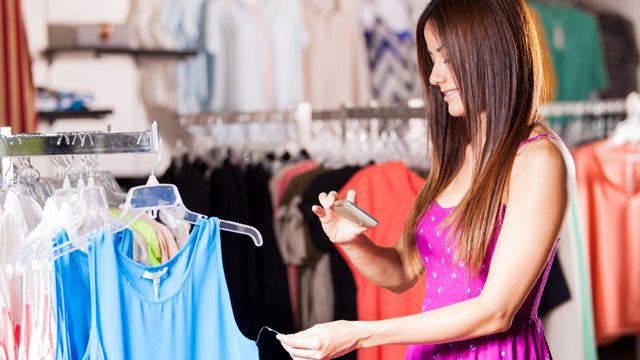Omnichannel. It’s the latest buzz word around the retail and marketing worlds. So what is it? Omnichannel is the seamless integration across multiple devices and platforms online, and in-store. It’s providing consistency across all touchpoints to create an optimal customer experience.
You have a responsive website (if not, read here why you should), you’re engaging on social media, and overall feel you’ve got the online space figured out. However, according to the Financial Review, online sales are only contributing to 6.9% of Australian retail spending – and growth has slowed.
So now more than ever, is the time to embrace omnichannel and digital technology to improve your bricks and mortar retail store. 2015 is the time to accelerate and differentiate.
To help, we’ve come up with a list of 5 ways retailers can digitalise their physical stores.
1. Digital Shopfront Window Displays
One of the quickest and easiest ways to incorporate digital technology is within a window display. Gone are the days of visual merchandising with mannequins – in with digital screen displays.
With 60% of Australian shoppers loyal to up to 10 brands it drives the need for competitor edge to increase foot traffic into your tenancy like never before. What better way than to show shoppers you’re on trend by exhibiting an eye catching digital shopfront to entice them.
Retailer bonus: Updating a USB stick with new videos or images is more time efficient than redressing a window the old fashioned way.
2. Click and Collect
A Click and Collect system allows consumers to order products online and arrange pick up in-store. A tailored delivery option that provides customer convenience by offering product purchase and delivery the way shoppers want it.
Retailer bonus: If your fitout is well designed, consumers will further spend in store when collecting purchases. According to a recent study by Verdict Retail 40% of homeware shoppers spent extra when collecting, “spending an additional 53.2% when picking up Click and Collect orders in store”.
For shopfitting advice on building a successful interior design, read our 4 Tips to Planning the Perfect Retail Fit Out.
3. Touchscreen Tablet Technology
One way to utilise touchscreen technology in store is to increase convenience by empowering shoppers with access to stock inventory. Jason Goldberg, Founder at RetailGeek told Shopify “While more than half of shoppers now use digital tools to pre-shop, the overwhelming majority still want to complete the transaction in store. When retailers think about their digital marketing, they shouldn’t just think in terms of capturing online sales. Providing a great store locator, giving access to real-time in-store inventory and having a well-executed local SEO plan, are amongst the highest value digital activities for any brick and mortar retailer.”
Better yet, if stock is unavailable in-store allow shoppers to arrange delivery straight to their door at the click of a button.
Retailer bonus: Obtain invaluable customer details for future marketing campaigns.
4. Free Wi-Fi
These days if we can’t access the online world, it’s fair to stay we won’t be staying long. As a retailer, we obviously want people to remain within our footprint as long as possible to increase the chance of spending. With 75% of shoppers using mobile devices in store why not follow in Westfield’s footsteps and embrace the increased use of mobile technology by provide shoppers free access to Wi-Fi?
Retailer bonus: Customers will linger longer and increase spending. The added benefit of in store Wi-Fi is that it allows retailers to analyse data transmitted from mobile devices, and even send customised push notifications. Which brings me to the next point …
5. Beacon Technology
Beacons are small gadgets that transmit a signal to Bluetooth enabled devices, identifying a shopper’s exact micro location. The devices are so tiny (we’re talking similar to the size to a 20cent coin) they can be easily hidden amongst almost any fixture in a shop fitout.
With the low energy Bluetooth signals, beacons can influence customer behaviour by providing personalised push notifications of information or special offers relevant to products shoppers are standing right in front of.
Will shoppers find this intrusive? Apparently not. Studies undertaken by eDigitalResearch in 2014 showed 45% of smartphone owners are receptive to retailers sending customised messages through beacon technology.
However there is a slight catch. Consumers must opt-in, as the transmitter technology requires a mobile app to gain its business intelligence. So if you have no app, you have no action.
Retailer bonus: Beacons can be used for in store analytics by collecting data on customer behaviour such as where customers went in store and how long they spent there.
Digital technology is one retail shopfitting trend that can be implemented in current stores by retrofitting to existing joinery, fixtures and fittings that were installed in the original fitout. With such varied application approaches, businesses of all sizes and shopfitting budgets can adopt digital and successfully merge online and offline stores for a seamless delivery.
To discuss becoming omnichannel by adding digital technology in your retail store, contact leading Melbourne shopfitting company, AAFS Shopfitting on 03 5943 0581.

